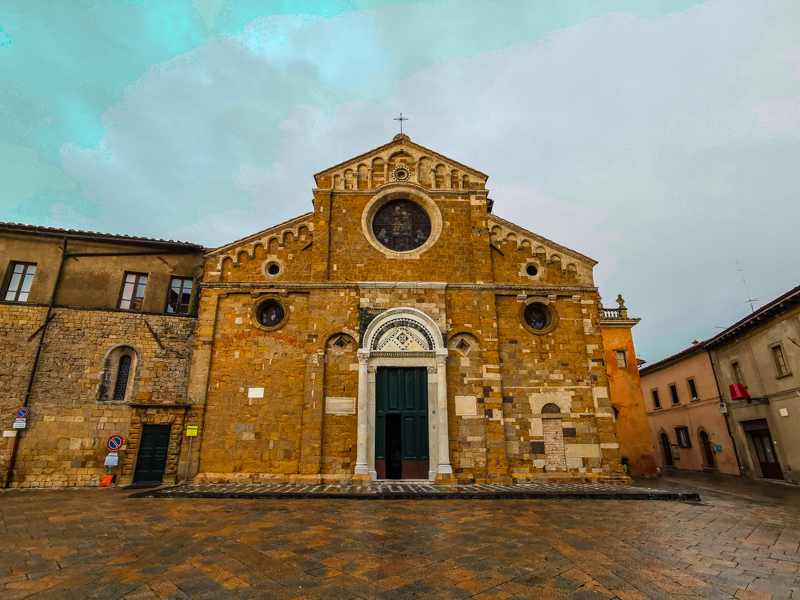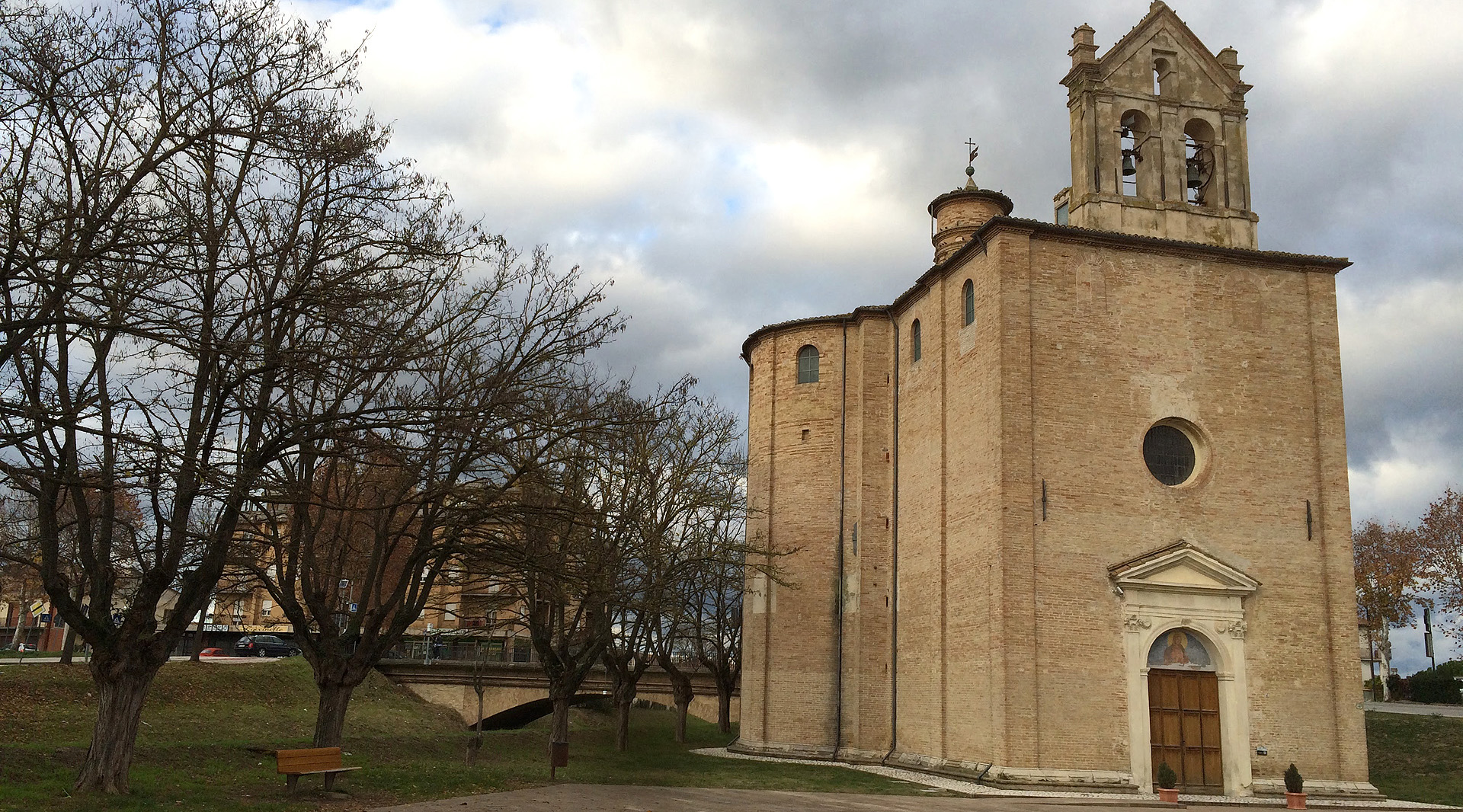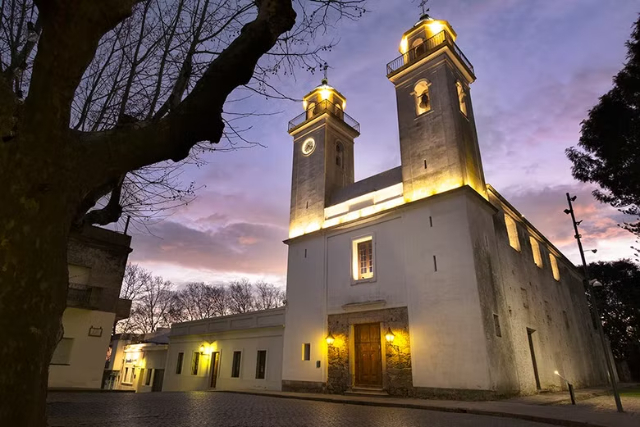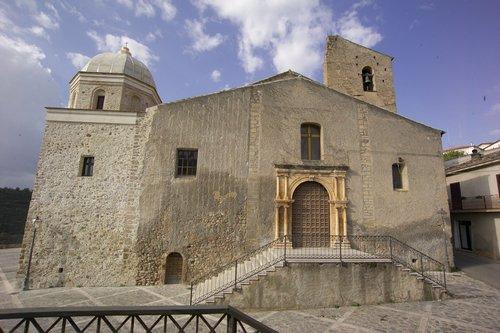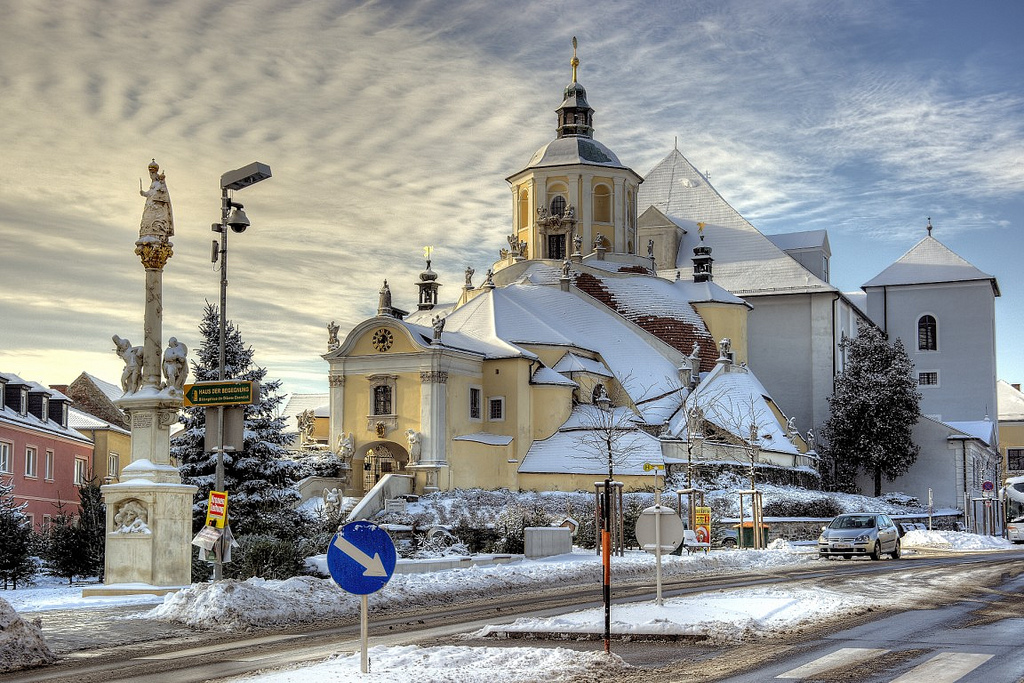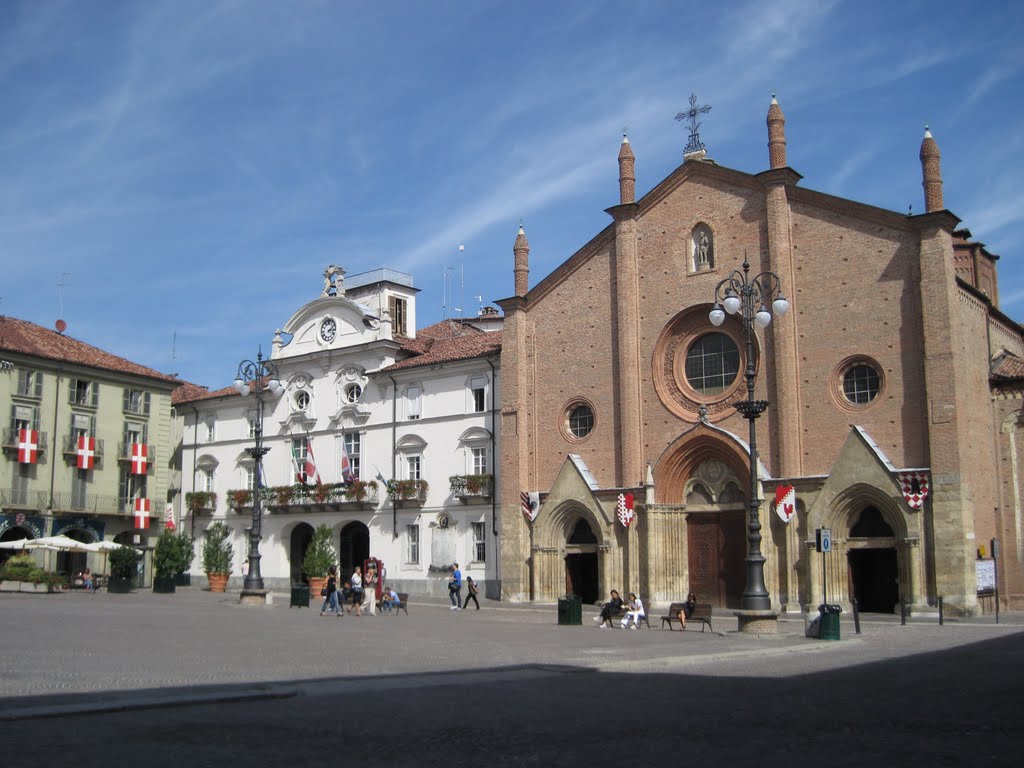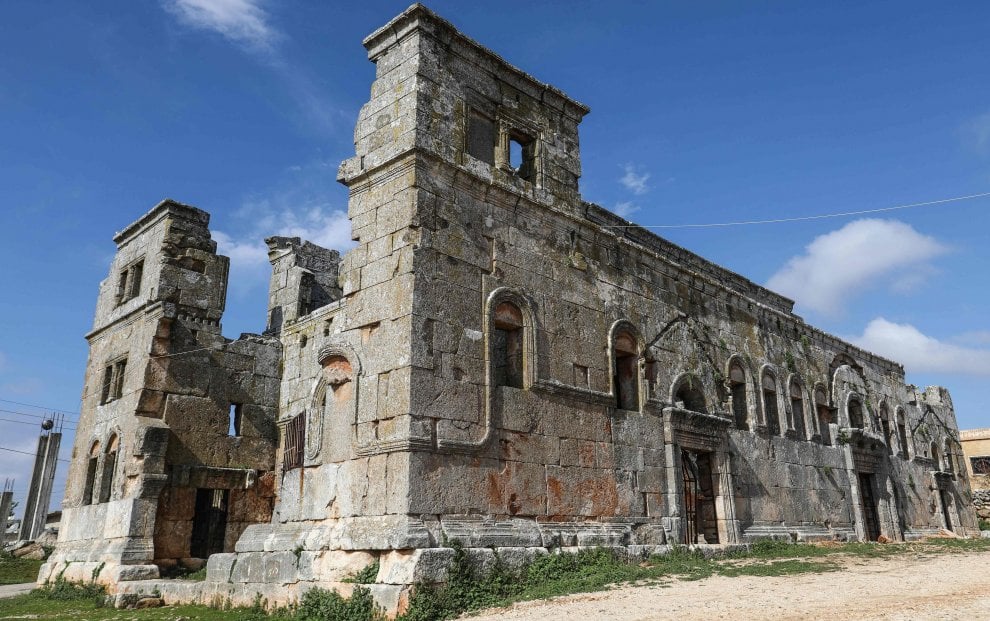The Cathedral dedicated to Santa Maria Assunta was built around 1120 on a pre-existing church dedicated to Santa Maria destroyed by a violent earthquake. The facade in Pisan Romanesque style dates back to the thirteenth century, when the church was enlarged and adorned most likely by Nicola Pisano who worked on the nearby Baptistery.
The interior is a Latin cross with three naves divided by 22 granite columns and walls painted in black and white bands. In the left aisle there is the pulpit, reconstructed using original elements of the XII century, while in a chapel there is the wooden group of the Deposition (1228), a masterpiece of the Romanesque sculpture.
The Cathedral has a late Renaissance appearance due to the continuous renovations that took place over the centuries, such as the grandiose coffered ceiling with decorative geometric elements.
At the center of the nave the busts of the saints of the church of Volterra: Saint Hugh, Saint Just, Saint Linus Pope, Saint Clement and the Saints Attinia and Greciniana.
